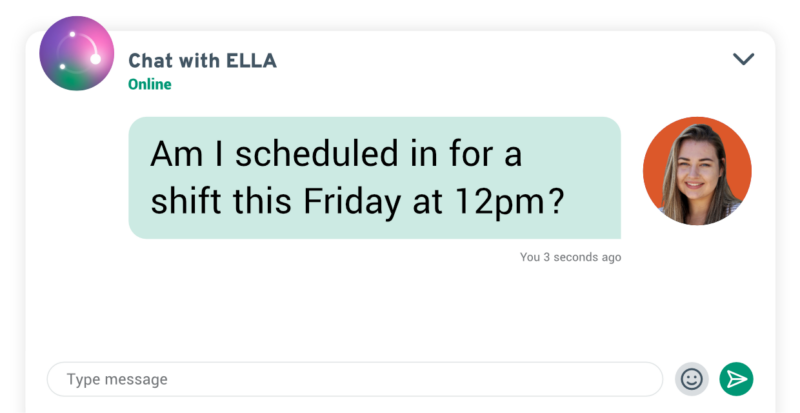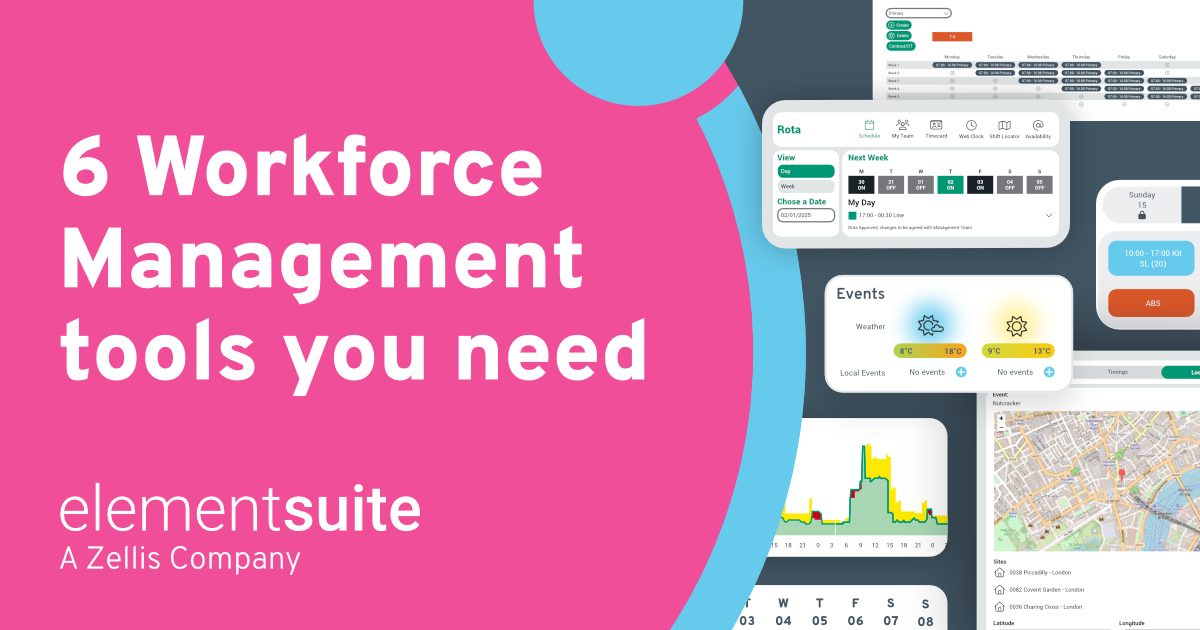Have you ever seen two people who seem perfect for each other, but due to the clear lack of communication, they can’t seem to get on the same page? It can be frustrating to watch, especially when it seems like they have everything going for them as individuals.
The same can be said for Human Resource Management (HR) and Workforce Management (WFM) systems within a company. Individually, they may seem perfect and functional, but when it comes to working together, there can often be a lack of communication that leads to inefficiency and frustration.
But the truth is, these systems are deeply intertwined and reliant on one another. And just like any relationship, if there is a breakdown in communication or understanding between them, chaos ensues.
Understanding the HR and WFM relationship
Think of the HR system as the partner managing the household details—recruiting, payroll, and employee engagement. Meanwhile, the WFM system is the partner handling the schedules, the time-tracking, and making sure things run efficiently day-to-day.
While both have very different functionalities, they both collect tons of data, and when they’re in sync, it’s pure magic. They can provide valuable insights for strategic decision-making and improve overall business operations. But when they’re not talking, it can feel like you’re in the middle of a bad marriage. Exhausted, unproductive, and ready to throw in the towel.
Data silos
There are multiple reasons why your HR systems may be in desperate need of couples therapy. One of them being data silos.
Say you and your partner are living together, but when it comes time to pay the bills, there’s no communication. One of you assumes the other is handling it, and the other does the same. Weeks pass, and suddenly, you’re hit with overdue notices and late fees — because no one actually checked who was taking care of what.
Now, replace the household bills with HR and WFM data. If your systems are not connected, you’re risking discrepancies that can lead to inaccurate information, duplicate work, or missed tasks.
Without communication and collaboration, data remains siloed between the two systems, making it challenging to have a complete view of employee information. Subsequently, this can lead to discrepancies in payroll, scheduling conflicts, and overall inefficiency.
And as a result, your HR team spends hours manually piecing things together like a detective in a mystery novel just to get payroll or schedules out the door in time. And we’re talking old-school detective, no fancy gadgets here.
No real-time insights
It’s date night, and you and your partner have both decided that after work you will both meet at this new restaurant that has just opened up in town. You get there on time, sit at the table and wait for your partner.
And you wait. And wait. And wait… After an hour, you decide to head home and send a passive aggressive text to say you are no longer at the restaurant.
Your partner finally gets home (3 hours later), and it turns out, that they were called in for an emergency meeting that went way longer than expected. But they didn’t communicate that with you at the time. Instead, you were left waiting and wondering what happened, feeling frustrated and ignored because there was no real-time communication.
The same goes for your HR systems. With disconnected systems, you’re always one step behind. Decisions are made on outdated data, and you are always stuck in yesterday.
Think about it: imagine losing out on operational cost savings because you do not know up-to-date employee availability, skills and compliance requirements. Your business misses out on optimising workforce distribution, cutting labour costs, and seizing moments to make shifts work for everyone. You’re basically flying blind.
But if your HR and WFM systems are integrated and working together, you have access to real-time data for accurate decision-making. You can see the bigger picture and make informed decisions about employee scheduling, resource allocation, and compliance requirements.
An employee calls in sick? No problem. Your integrated HR system will automatically tell its integrated WFM partner, and new schedules are proposed in real-time to ensure coverage. No more scrambling around, sending last-minute texts or emails to employees to gather availability and manually adjusting the schedule. And most importantly, you’re saving time and energy for everyone involved.
Employee engagement takes a hit
Then we have the situation of the awkward third wheel who is always in the way and preventing strong bond building between you and your partner.
Every time an employee needs to log into a system, they’re dealing with this extra step – a middleman creating friction and frustration. It’s no wonder employees start to feel like they’re stuck in a mismatched relationship, juggling passwords and navigating clunky interfaces just to manage their time off requests.
Two systems, two logins—who has the patience? The hassle just eventually drains productivity, as employees spend more time managing logins than focusing on their work.
Today’s workforce demands seamless self-service tools. In fact, if we look at the statistics, companies leveraging self-service tools see, on average, a 25% increase in employee productivity and a 33% reduction in turnover rates.
You can see why. Having a single sign-on interface and integrated HR and WFM systems makes it easier for employees to manage their schedules, request time off, and view their pay and benefits information. They know that they can find everything they need in one place, increasing their sense of control and satisfaction with their job.
You can even go that extra mile and layer on an AI HR assistant such as ELLA to make the experience even more personalised and intuitive. Employees can ask ELLA to update their availability, view schedules, update qualifications and right-to-work documents and more, all in the palm of their hand.
However, it is important to note that AI layering can only be achieved with integrated systems. So, if your HR and WFM systems are not in sync, you are missing out on the opportunity to improve employee engagement and productivity.

Security risks
In relationships, a lack of trust can be the deal-breaker. If you can’t trust your partner, the relationship is destined for failure. You want to trust that only you have access to their romantic heart. And if you can’t trust that, things fall apart.
So why would you approach your HR technology any differently to the standards that you set for your romantic partner? Think of it this way: more points of entry = more risk. Each system is another door hackers could stroll through.
Companies using multiple, non-integrated platforms are at a higher risk of data breaches, particularly when these systems don’t share consistent security protocols. Different systems often follow different encryption and access control protocols, creating security gaps and vulnerabilities. A hacker’s dream.
But with increasing data privacy regulations, these security risks can result in hefty fines and damage to your company’s reputation. What happens then? Your business loses credibility, customers lose trust, and employees may become hesitant to share their personal information with the company.
Is it really worth the risk?
Scaling issues
Lastly, is growth. Successful relationships allow for growth, change and adaptability in the long term. When one partner grows and the other doesn’t, or if neither adapts to life’s changes, it’s hard to make things work in the long term.
Just as your individual priorities change as you grow, as your business grows and evolves, so do your workforce management needs. But what if you’re a HR system stuck with a WFM system that has limited capabilities or requires expensive customisations to accommodate this growth?
It’s like being in a relationship where one partner is constantly evolving, expanding their horizons, and adjusting to new challenges, while the other partner is stuck in their old ways. Eventually, the gap becomes too wide, and the relationship starts to show signs of strain.
It’s stunting your growth.
How couples therapy (HR & WFM under one roof) can help
Like any relationship, the key to a harmonious HR and WFM system partnership is effective communication. And that’s where collaboration comes in. By having one simple system for HR and WFM, you can break down data silos, improve efficiency, and gain real-time insights for better decision-making. It also simplifies processes for employees, reduces security risks and both systems are built to scale together.
We do not mean investing in an external data lake that overlays your systems. Yes, your systems would talk a lot more than they already do, as they would be in the same hypothetical building.
However, true collaboration means that systems are connected and speak the same language. Data flows seamlessly from one system to another without the need for third-party applications (which, of course, creates added security risks and costs).
With both systems under one roof, you can say goodbye to double data entry, manual adjustments, and time-consuming administrative tasks. Instead, you can focus on creating an engaged and productive workforce while maximising the potential of your business.
But, just as you would carefully select a couple’s therapist, you need to carefully select an integrated solution that meets your organisation’s unique needs and goals. Consider factors such as scalability, compatibility with existing systems, and ease of use for both HR teams and employees. For more information on how to select the right HR software for your business, we recommend reading our article on HR Software Dating: How to Know if it’s the Right One for You
Don’t stay stuck in a toxic relationship with your HR and WFM systems. Book a demo today, or speak to one of our expert HR tech consultants to learn how elementsuite can help transform your HR and WFM processes to drive growth and success.




